Background
When middle school teachers witnessed a sense of hopelessness in their students—particularly those from traditionally marginalized populations—they looked for ways to empower them. For this grant project, students hosted an interview series, speaking with a diverse group of individuals who found resilience, success and leadership in adulthood.
Grantee: Bonnie Raines
Level: District
Grade Level: Middle School
Location: Santa Rosa, California
Goals
- Students will learn about marginalization.
- Students will develop interviewing skills.
- Through readings and face-to-face interviews, students will learn about resilience through the stories of others.
- Students will reflect on the importance of representation.
Measures
- Written reflections
- Thank-you letters to interviewees
- Private student interviews
Grantee reflection
“The student-designed questions allowed speakers to tell vulnerable stories of marginalization and resilience. Some students said these stories made them contemplate their own story and culture and helped them feel optimistic about overcoming their own challenges and finding success. Empathy and validation were the two clear themes.”
Procedure
Interested? Here's how you can do this project in your classroom.
What You’ll Need
- Recording equipment (camera and microphone)
- Tripod (optional)
- Screen (optional)
- Lights (optional)
Steps
- Consider who might best speak to your student population. Arrange for multiple speakers to provide multiple avenues of connection for students. Ensure interviewees are willing to talk about their own experiences and are comfortable being vulnerable in front of a group.
- Teach students how to listen actively during interviewing, ask open-ended questions and ask follow-up questions. Local community groups or nonprofits, if available, can help teach these interviewing and oral history skills.
- Give students a written survey (see below for example) to assess their prior knowledge of marginalization.
- Have students practice interviewing with each other and community members, then ask them to reflect on the experience. Provide feedback for improvement.
- Have students design questions for each interviewee, beginning with less sensitive questions, such as “Tell us about a positive experience in your life” or “What were you like when you were our age?” Have them include more complex questions as well, such as, “Have you ever been marginalized? If so, tell us about it.” or “What does social justice mean to you?”
- Make the interview a professional experience, if possible, with a video camera, tripod, lights and a green screen. Use a lavalier microphone for the interviewee if available.
- Choose two students to be “greeters” (to meet the interviewee in the office, introduce themselves, offer water and have the interviewee sign a video release form). One greeter may introduce the interviewee with a short synopsis of the person’s background (written beforehand by the interviewee or by students).
- In the classroom, choose a “panel” of four or five students who will ask the questions while the rest of the class sits behind them in a horseshoe curve. (Or students may sit in a large circle to give everyone a chance to ask their own questions.)
- If there is a panel, have each person get up to shake the hand of the speaker and introduce themselves. Give panel members (or in a circle, just one student) a script to help them get started. Here's an example: “We’re here today on [the date] with _________. I am ________, and we are going to ask you some questions. If any question does not feel comfortable, just let me know, and we’ll move on.”
- Have students take turns asking questions and follow up on them. Follow-up questions often lead to the best responses since they come from genuine interest.
- One student should keep time, announce the end of the interview and thank the speaker. You may want to ask the interviewee for a photograph with the panel or the class.
- In the following days, have students write thank-you notes to the speaker, noting what stood out for them about the experience. You may have them write down their reflections or share their thoughts aloud where appropriate.
- Give students opportunities to share in small groups. Ask them to connect their learning to their own lives or to a reading.
- You may have the class read a book on a relevant social justice topic to connect it to a speaker’s story. Students could also write poems about their experience.
- Have students design tri-fold poster boards to share their learning with the public. They can include their reflections, thank-you letters, poems or artwork on their posters.
- Hold a showcase event. Invite parents, administrators, district personnel and friends. Students can take turns remaining at their posters and walking around with a “scavenger hunt” sheet to answer some questions about classmates’ projects.
- Have students fill out a post-project awareness assessment. Invite them to talk about how they felt about the project and what they learned.
Related Resources
Student Reflections
“The interviewees were great, and I felt a sense of hope for everyone in the world. When they talked about how they were marginalized in their past, I felt sad about how our world has bullying or marginalizing. It gave me a sense that we can help and make the world better. This project made me realize that people in this world are different and how we should respect them. ‘Voices of Hope’ is a great project and helps people understand there is also hope.” —Arwen
“Throughout this process, it has been interesting seeing people from entirely different areas of life come here to share their story. It makes you realize that history is real, war is real, bad things happen. This project has definitely given me a sense of hope. Hope that my generation can help preserve and protect our world and every creature living on it.” —Amelia
“I think the hope we’re talking about here is hope for a better future. Those who are forced to put their heads down or backed into the shadows, I feel the hope is like the little light that is leading them out of the darkness and the voice; that’s where we can all take place. It’s a whole class, but it’s not just us. It’s more people, so I feel like if we all just share our thoughts and our voices, then the light which is the hope will get brighter.” —Brisza
“‘Voices of Hope’ has caused me to think about the effects of racism, marginalization and racial bias on minority groups and to think about privilege and how it has affected me negatively but also positively. This project does bring me hope because if we begin teaching us about the darker parts of our society, as we get older, we will be more willing to talk about it and make changes that benefit marginalized groups.” —Chelle
Photos from interviews and student showcase
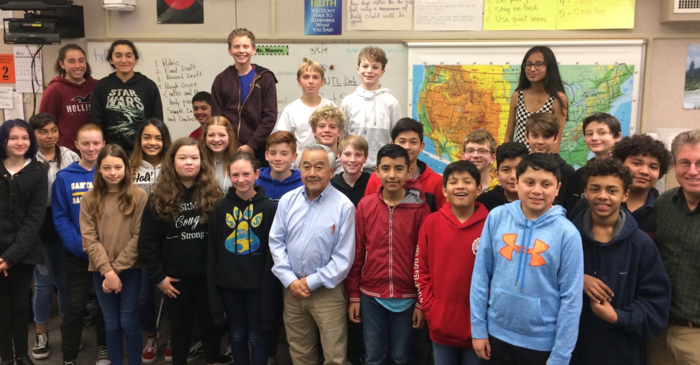
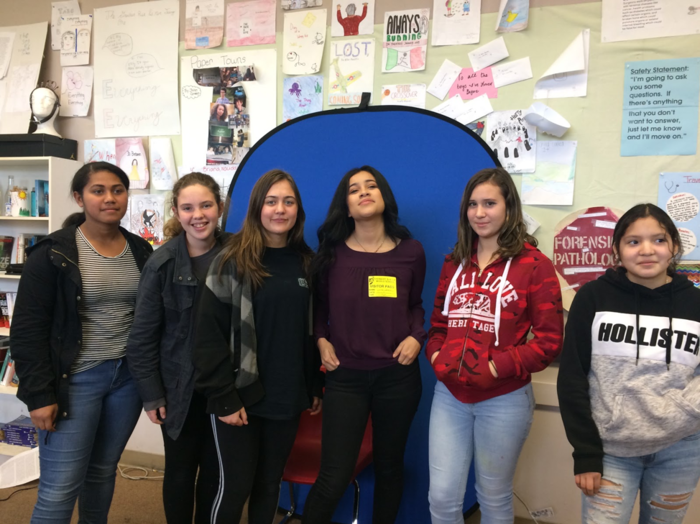
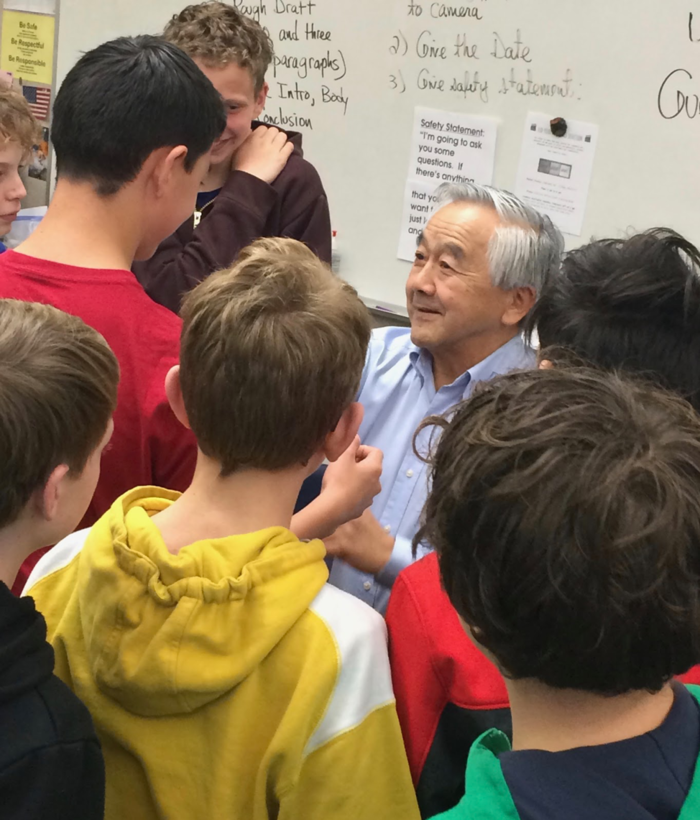
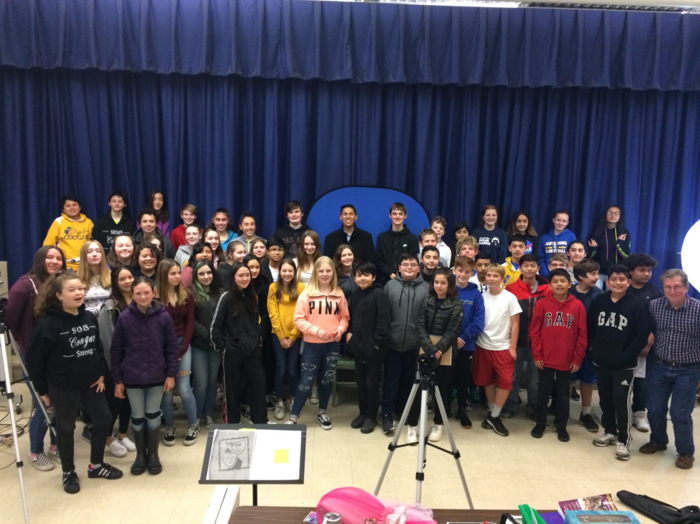
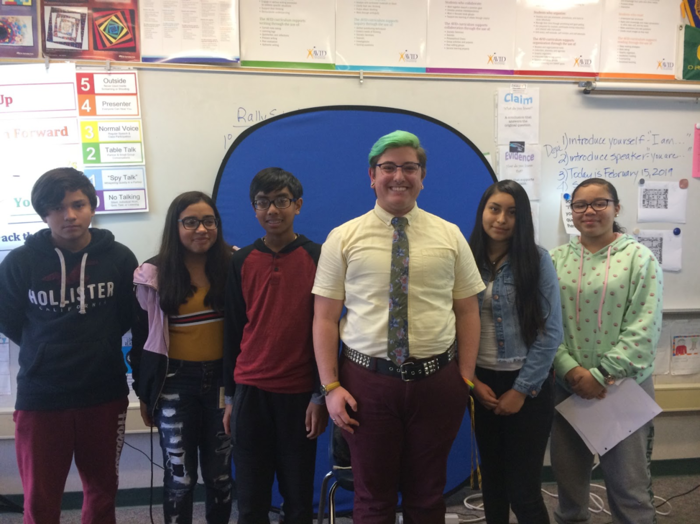
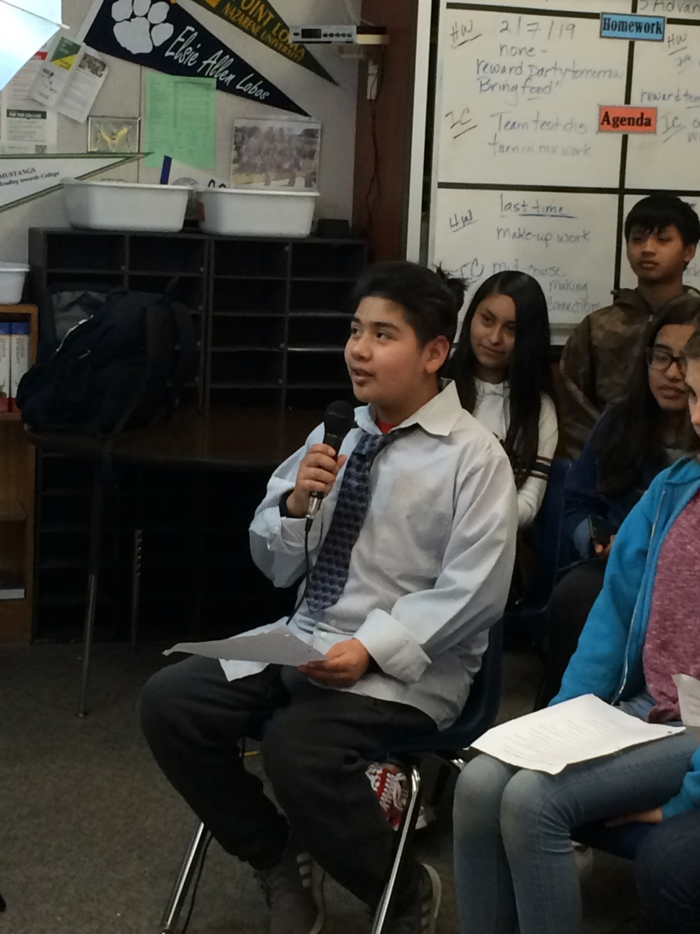

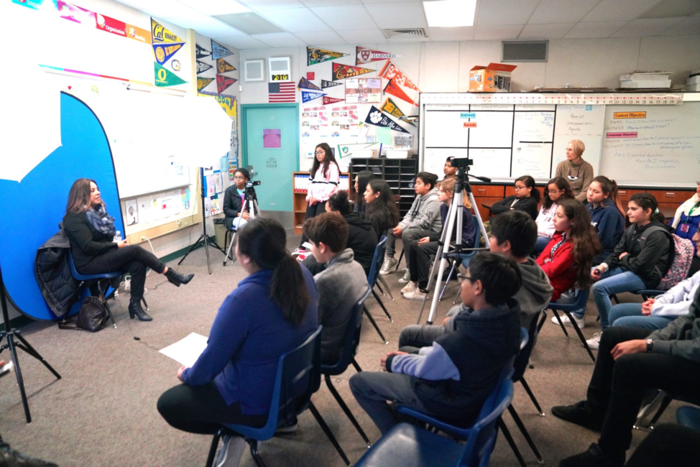
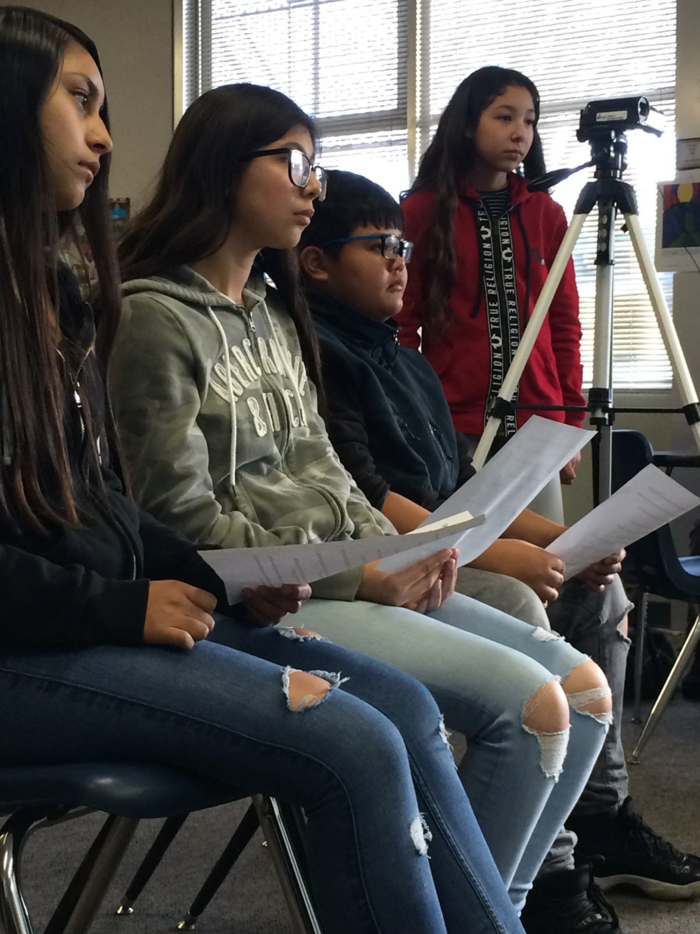
Sample Interview Questions
- Who is a role model for you and why?
- What were middle school and high school like for you? What were the good parts and the challenges? Were you openly transgender in high school and if you were, how was that for you?
- Can you tell us about the pronouns you use?
- Have you ever felt marginalized? Tell us about it.
- What are the good parts and what are the challenges for you in being transgender?
- Tell us about your job. What do you like and what are the challenges?
- Have you faced job discrimination because of being transgender? Has it affected your career?
- What advice can you give middle school students?
- What does social justice mean to you, and what do you think should be done to make a difference in the world?
- What are your dreams for the future?
- What else would you like us to know?
Pre- and Post-project surveys
Pre-project Survey
Name:
Teacher:
On a sheet of lined paper, number the questions and answer the following:
- What does the phrase “social justice” mean to you?
- Today and throughout history, different groups of people have been marginalized by others (mistreated/excluded/not given the same rights). Why do you think some people marginalize other people?
- What are some of the things that marginalized people experience?
- What are some of the groups of people who are marginalized in our society?
- Have you or people you know ever experienced being marginalized? Explain.
- For which group(s) of marginalized people do you feel the most empathy?
- What questions do you have about social justice and/or marginalization?
Post-project Survey
Option A:
On a sheet of lined paper, number the questions and answer the following:
- After being part of “Voices of Hope,” what are your thoughts about marginalization, and for which group(s) of marginalized people do you feel the most empathy?
- What value has “Voices of Hope” had for you? Has this project given you hope for the future? If so, how so?
- What does the phrase “social justice” mean to you after this project? Can you imagine yourself taking some kind of social justice action in the future? If so, what might that be?
- Do you think “Voices of Hope” interviews of community members would be valuable for other classes in the future? Why or why not?
Option B:
On a sheet of lined paper, write a reflection about “Voices of Hope.” Consider the following: the impact this interview project has had on you, how your awareness of marginalization and social justice have changed, if this grant would be beneficial for other students, and whether this project has given you a sense of hope. Also, include any other feedback that might be helpful to the writer of this grant.
